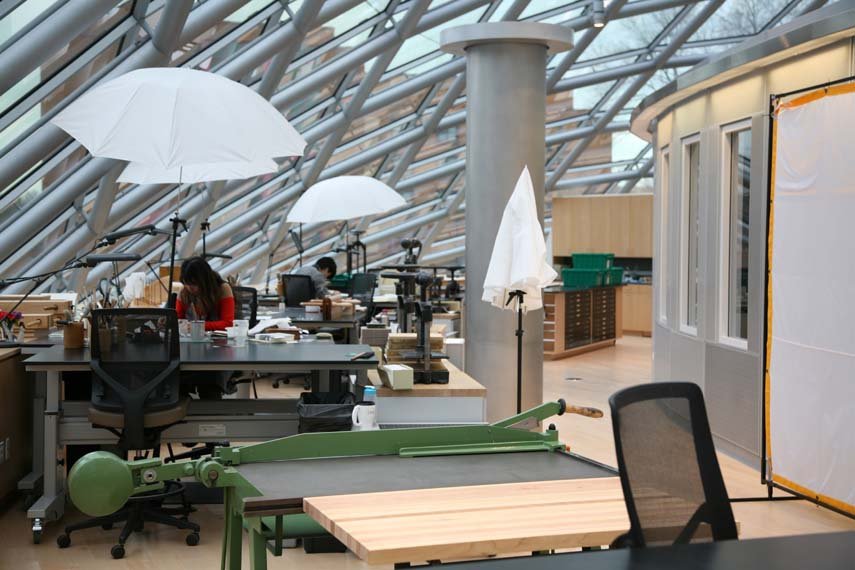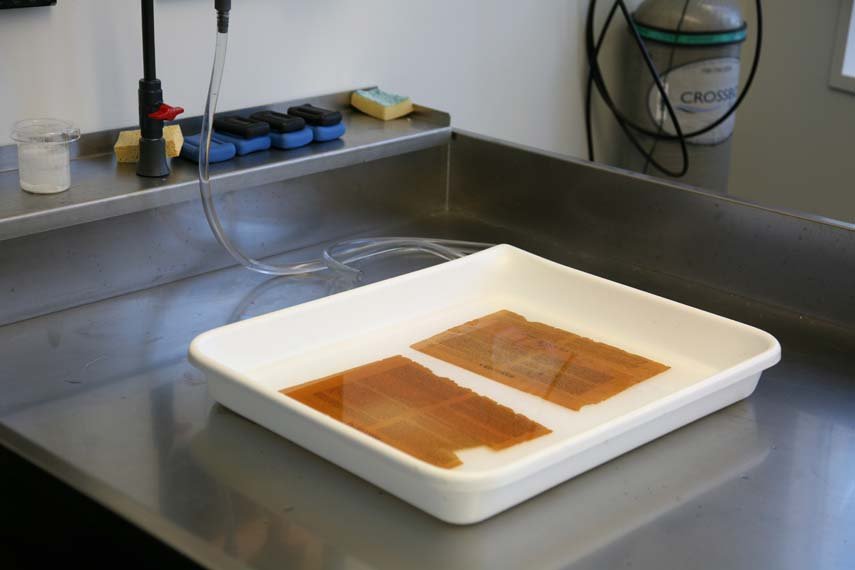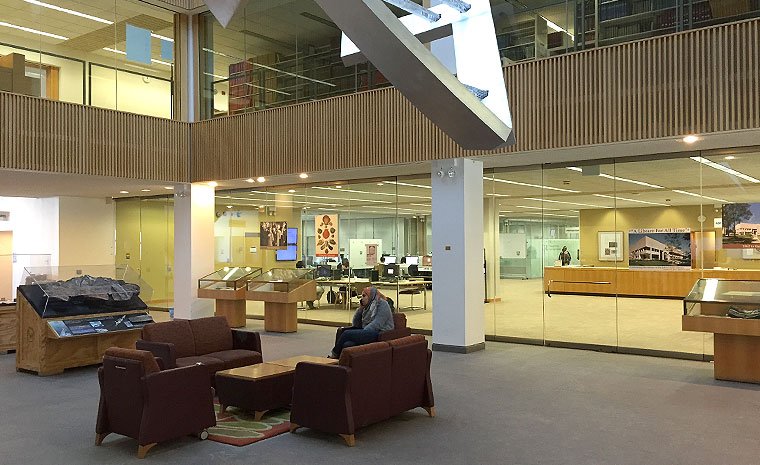What is Conservation?
Conservation is an essential component of preserving the library's collections. Using current knowledge of degradation pathways as well as traditional skills, conservators prevent and stop the degradation of library collections like rare books and archival materials. Conservation treatment may include a combination of chemical treatments such as aqueous deacidification – the process of washing paper in a bath of purified water enriched with alkaline chemicals – and traditional treatments like rebinding a book with broken sewing.
Conservators entering graduate programs have academic backgrounds in chemistry, studio arts and art history. In conservation Masters of Arts and Masters of Science programs, students learn technical art history and the history of bookbinding and printing, as well as chemistry, microscopy, instrumental analysis and materials science. Students also work on practical skills such as bookbinding and paper repair.
Conservation is called "restoration" in many parts of the world. The components of conservation that include repairing broken, weak and deteriorating objects are in some ways close to the traditional art of restoration. The difference being, a conservator restores an object to a functional state without attempting to make it appear that the object has never suffered damage. A conservation repair is structural and functional as well as sympathetic to the object's original appearance. It is not a restoration because the history of the object, including past damage, is obvious to those who are looking for it.


